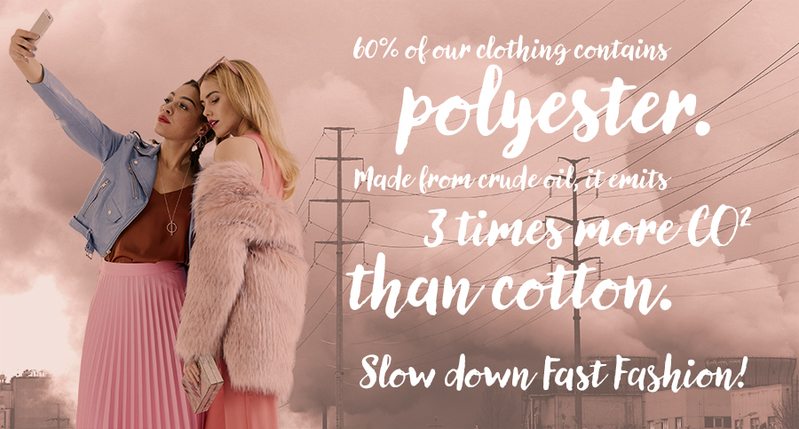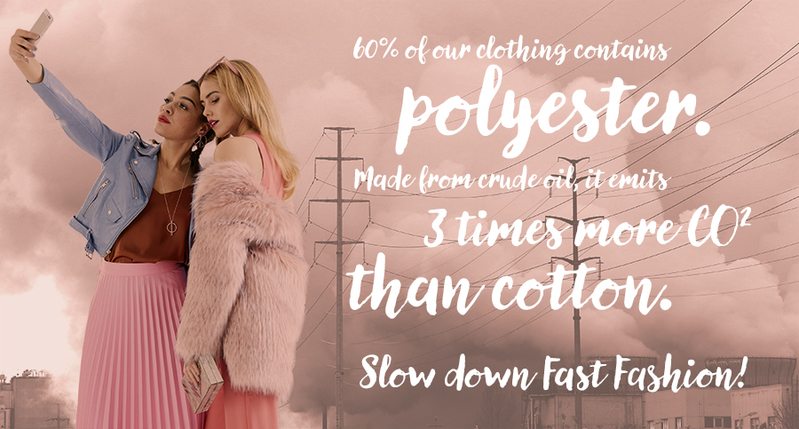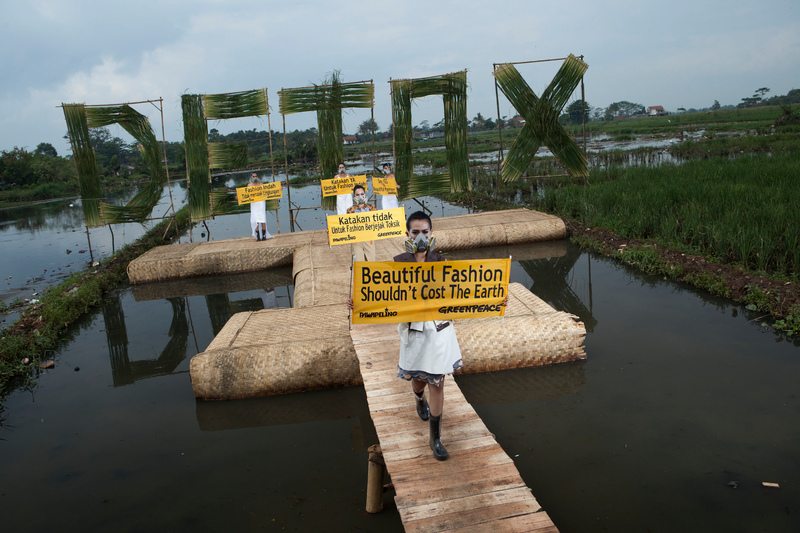We’re not the fashion police you remember from TV. We won’t bust you for wearing too many patterns at once and we certainly won’t judge you for wearing black and blue at the same time.

As part of the campaign to reduce overconsumption, the Detox My Fashion campaign has produced a set of infographics and illustrations for Buy Nothing Day.
We’re not the fashion police you remember from TV. We won’t bust you for wearing too many patterns at once and we certainly won’t judge you for wearing black and blue at the same time.
We’re a different kind of style authority – calling out designers that actively contribute to harming our environment on a massive scale. It’s an offence far worse than any material fashion faux-paus.
Does fashion contribute to climate change?
According to Marie Claire, the fashion business is responsible for 21 billion tonnes of the textile that ends up in global landfills annually – totalling 85 percent of all cloth waste. Every year, the industry contributes 10 per cent of global carbon emissions and 20 percent of industrial water waste.
The figures alone are terrifying, but they beg the question – how exactly does your wardrobe contribute so massively to carbon emissions and waste? How on earth are fashion and climate change connected? The problem starts with our materials. Take polyester fibre for starters, a petroleum product, the creation of the material itself contributes directly to the depleting our earth’s oil reserves.
But the damage doesn’t stop there. When we wash these items, microplastic fibres embedded in the material transfer into our water. Research by ecologist Mark Browne found that a single synthetic garment rinses off 1,900 individual microplastic fibres which ultimately end up in our oceans.
Not to mention the fact that polyester can take up to 200 years to decompose properly, adding significantly to the growing textile waste across the globe. All of this damage from a single material. More concerning yet, polyester is now used in about 60 per cent of our clothes.
To top it all off our global market means many of these clothing items are shipped en masse around the world via oil-guzzling ships after being created in coal-burning factories and being packaged in plastic.
“I feel more confident than ever that the power to save the planet rests with the individual consumer.”
– Environmental Advocate Denis Allen Hayes
There’s a silver lining to all this bad news (as there always is). You can help stop this mess by evaluating how you live, by not letting your wardrobe be a part of this climate disaster. As consumers AND advocates, we speak with our wallets and with our actions. The two combined have the power to affect real change. So, what does this look like?
Make your money talk
When it comes to big brands, our wallets are our most powerful weapons. This means refusing to give money to clothing companies that aren’t making steps in the right direction and making an effort to shop at the ones that are.
In 2011, Greenpeace launched an initiative called ‘Detox my Fashion‘ to start addressing the toxic pollution contributed by the fashion industry. Two years later, we launched an annual report called ‘The Detox Catwalk’ aiming to highlight companies that were making an active effort towards sustainability and to expose those who were not under the lens of three criteria:
- Transparency – Disclosing information on suppliers and the hazardous chemicals they discharge.
- Detox 2020 plan – A system for eliminating hazardous chemicals that is proactive and precautionary.
- Perfluorinated Chemical (PFC) elimination – Substituting hazardous PFCs with safer alternatives.
The 2016 report found the best performing brands were: Inditex, Benetton and H&M. The worst included: Limited Brands, Li-Ning and Nike. Nike was the only brand to completely fail in all three categories.
These reports exist as a guide to help all of us become more conscious consumers, to help us make our purchasing decisions count for something more. To learn more, check out the full report.
Did you know that when the life of a piece of clothing is doubled from one to two years it can reduce emissions by 24 per cent? By eliminating our fast clothing mentality we can have a major impact on our climate.
Don’t buy another black t-shirt when you already have three, shop at secondhand stores when you can, repurpose your old jeans into a cool new pair of shorts for the summer. By taking these little steps towards being more conscious about our clothes, we can save not just money, but precious water and raw materials.
Join the movement
Together with our supporters, we have been working to not just raise awareness around the lack of sustainability in fashion but we have attempted to put an end to it. So far, our Detox My Fashion campaign has secured commitments from 76 international brands, retailers and suppliers – not to mention the political impacts, triggering policy changes in Europe and Asia.
Let’s make a new kind of fashion statement – one that is stylish and sustainable.



